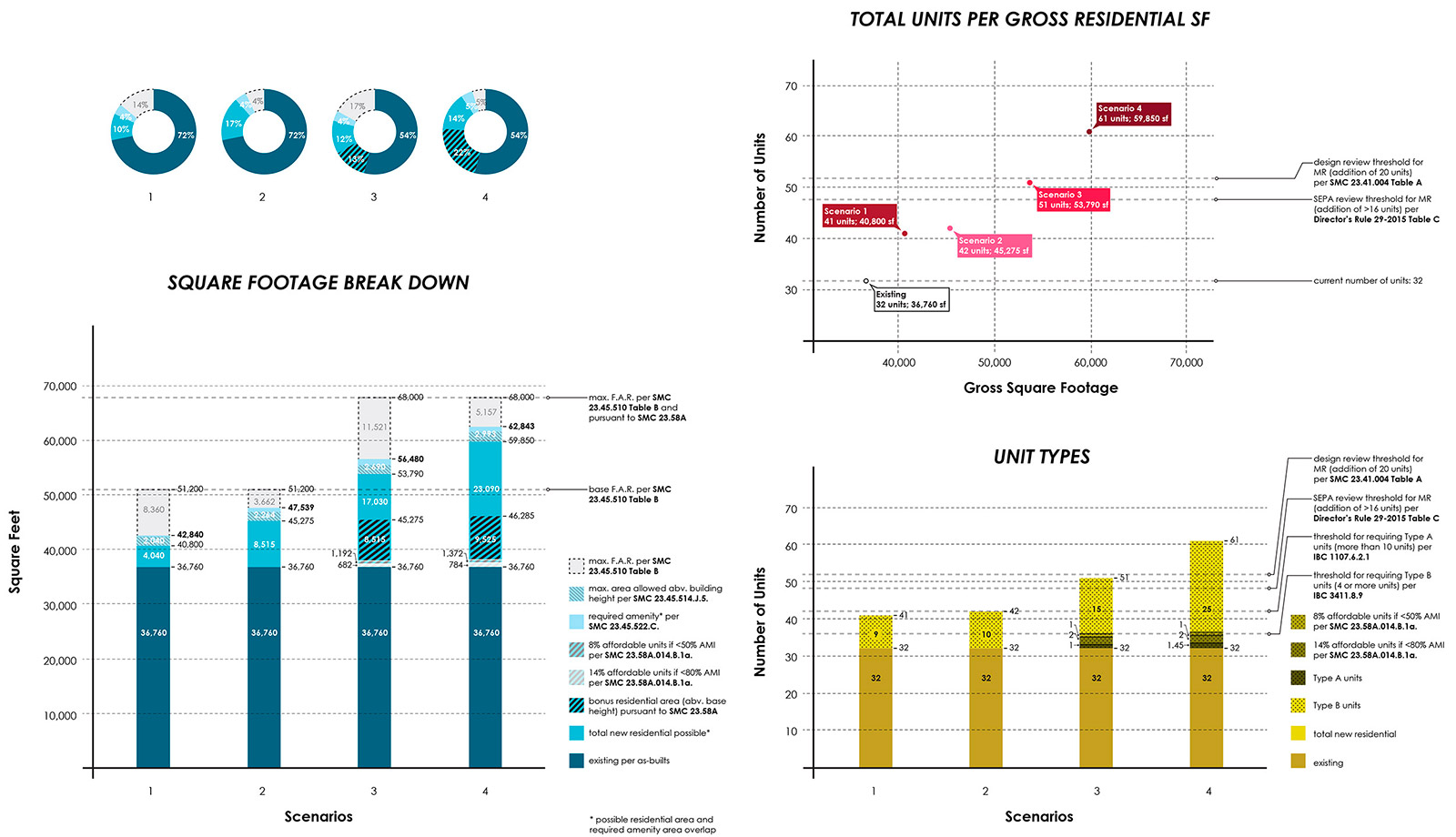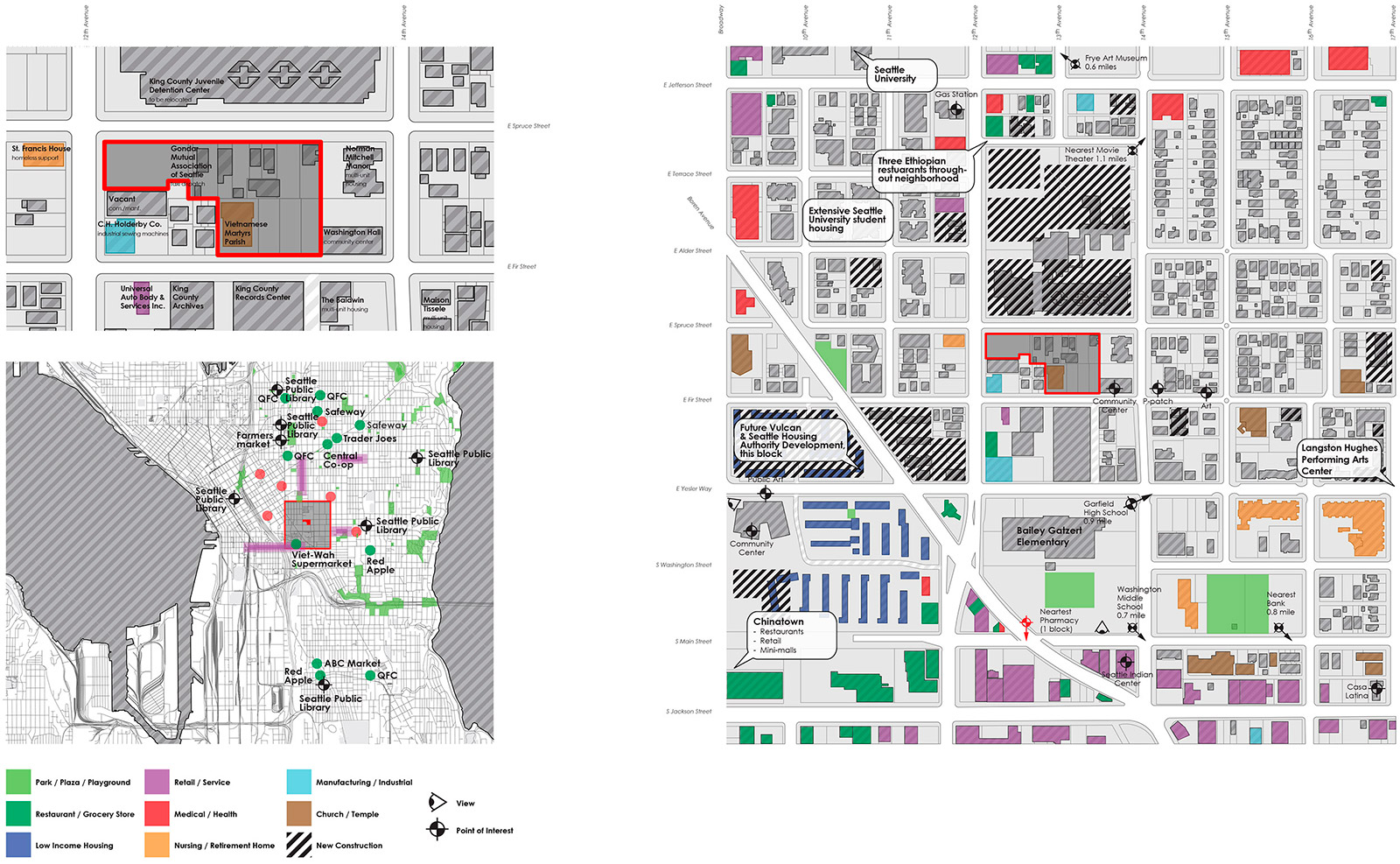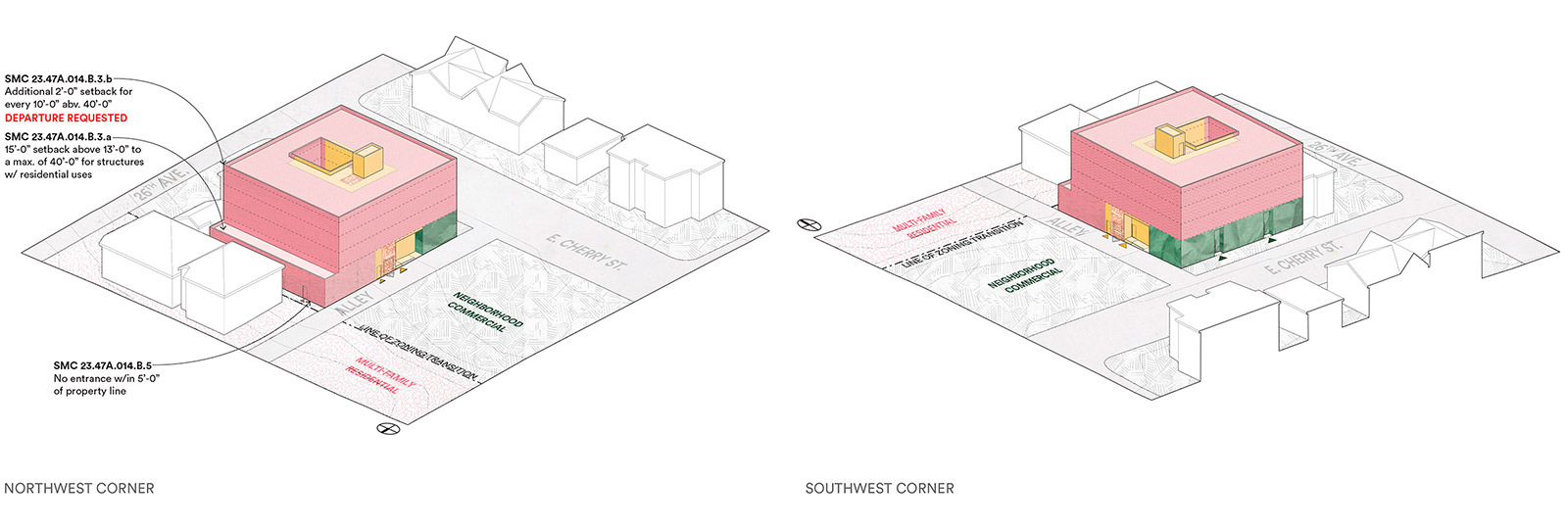Over the last decade, as land is increasingly scarce in most U.S. cities, identifying the right property for a multi-family or mixed-use development has become a magnitude more difficult. In places like Seattle, available parcels often involve layers of land use code provisions to track, construction complexities to mind, and a host of variables to solve. Land acquisition and a project’s feasibility are dependent on the critical path period of information research, sorting, and prioritizing. This cursory study phase is best performed by a seasoned architect early in the project. The five points below outline the advantages of having an architect on call during the property assessment process. The fact of the matter is that an experienced architect spends most of their working days (and nights) assisting clients in all manner of assessment opportunities, challenges, clearing hurdles, and closing loops to make a project viable and to create more value.
Weed Out the Problems
During the property search phase, wise developers have an experienced architect on call, ready to perform cursory studies on parcels as they are identified. It’s not unusual for a development team to keep an architect on retainer so that research and sorting may happen efficiently, allowing the team to quickly filter potential properties from those that could otherwise become money sinks. When enough indicators on a property prove it to be a viable candidate, the developer locks it up with an offer and feasibility period, which secures the parcel and removes the competition from the equation. Meanwhile, the architect, already knowledgeable about the property, continues to research and gather information at a more detailed level. The developers still trying to navigate zoning and land use criteria, or waiting for their engineers to return their call, are left out.
Cross-pollination is more than the sum of its parts
Most architects with a few decades of experience have a network of professionals in the real estate business, a working knowledge of properties in town, and connections to investors or possible financial partners. More, a savvy architect likely knows of potential properties (on or off market), and they’ve likely performed studies on similar properties, or the exact same property. With these assets, a project team has a deeper bench and is well ahead of the game.
Technical negotiation points are difficult to refute
The business world is keen on the Sawdust Principle, where as a byproduct of their primary purposes, companies identify a use (and value) for the waste they create. It’s no different in the design world, and the information research and sorting noted above is a perfect example. While an architect’s land use code study typically results in a list of possibilities and opportunities for a development, the stuff that makes the architecture, such as a study, also produces a healthy roster of limitations, constraints, variables, and other oddities about a particular property. This pile of sawdust can easily be turned into bartering points during the negotiation process of a property. All too often, landowners’ and realtors’ wares are priced as if they were the Taj Mahal. A brief but shrewd study of the land use code typically proves otherwise, and an architect’s fee for a cursory study is easily offset several times over by knowing what to do with the sawdust.
Sequencing and Timing
With building departments taking months and years to process, review, and issue permits for multi-family and mixed-use developments, the sequencing of the permit process is key. In many jurisdictions a project number must be established before a land use reviewer will meet with the design team, or simply provide feedback about a property. Some jurisdictions won’t release property assessment reports until a project is officially entered into the system. Such protocols quickly create an intricate sequence of formalities, which, if not properly understood, may add unnecessary time to the cursory study process. Understanding and optimizing the sequencing are key to garnering the full picture of a property, and the most appropriate permitting process. Getting in line early is also critical, and an experienced architect puts the chess pieces in place well ahead of time.
Mind the Thresholds
Before the first line of a design is drawn, a savvy architectural team thinks through the permitting thresholds of a project. Metrics — such as area and unit count — can easily tip a project from requiring little design review, to a time-consuming and expensive comprehensive review process. Identifying these permitting thresholds is not only key to the timeline, but also to the design and budget. Figuring out clever strategies to stay under key thresholds can save months, or even years, and hundreds of thousands of dollars. Determining the permitting goals of a project early on has direct impacts on the pro forma, and can inform the negotiations and margins of the land purchase.

Once a property meets the criteria outlined above and the deal closes, it’s a seamless transition into the feasibility study of a project. Stay tuned for an upcoming article outlining the architect’s role through this next phase.
Cheers from Team BUILD








